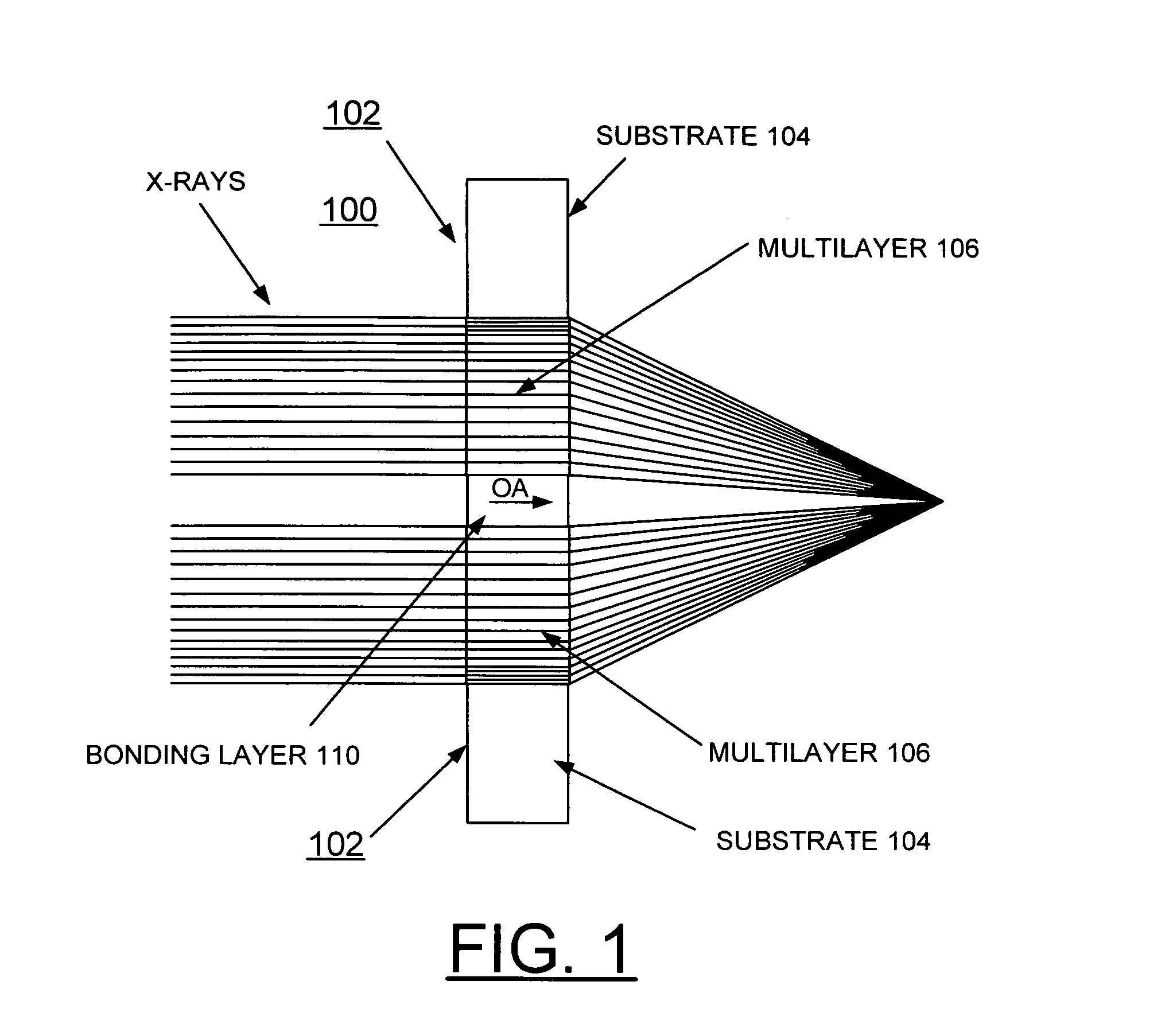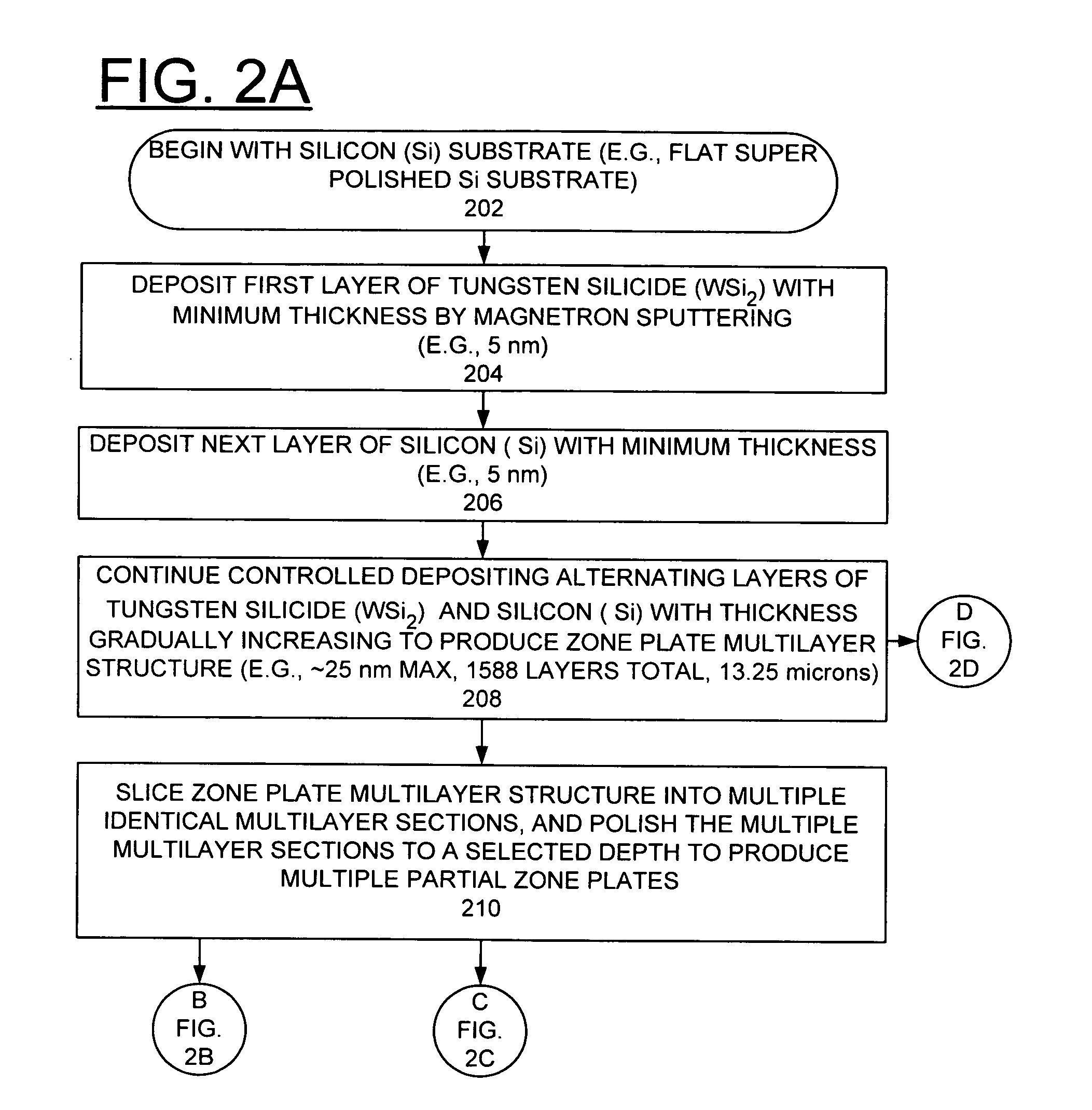Method of making and structure of Multilayer Laue Lens for focusing hard x-rays
- Summary
- Abstract
- Description
- Claims
- Application Information
AI Technical Summary
Benefits of technology
Problems solved by technology
Method used
Image
Examples
Embodiment Construction
[0023]In accordance with features of the invention, fabrication of linear zone plates is achieved using sputtered-sliced planar multilayers made of selected materials. The fabrication of zone plates by alternative techniques of the invention surmounts some prior art limitations. A growth of a multilayer film to be used in transmission or Laue diffraction geometry is provided, in which the thickness of consecutive layers gradually increases according to the Fresnel zone formula. The film is sectioned after growth to the required depth. For a planar multilayer, this produces a linear zone plate that can focus x-rays substantially in one dimension.
[0024]In accordance with features of the invention, a method of making a Multilayer Laue Lens (MLL) zone plate includes the deposition and sectioning of a multilayer consisting of high-Z and low-Z layers, where Z is the electron density. The thickness of deposited films can be controlled in the Angstrom range much more precisely than the x-y ...
PUM
 Login to View More
Login to View More Abstract
Description
Claims
Application Information
 Login to View More
Login to View More - R&D
- Intellectual Property
- Life Sciences
- Materials
- Tech Scout
- Unparalleled Data Quality
- Higher Quality Content
- 60% Fewer Hallucinations
Browse by: Latest US Patents, China's latest patents, Technical Efficacy Thesaurus, Application Domain, Technology Topic, Popular Technical Reports.
© 2025 PatSnap. All rights reserved.Legal|Privacy policy|Modern Slavery Act Transparency Statement|Sitemap|About US| Contact US: help@patsnap.com



